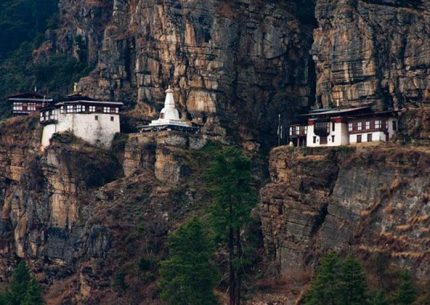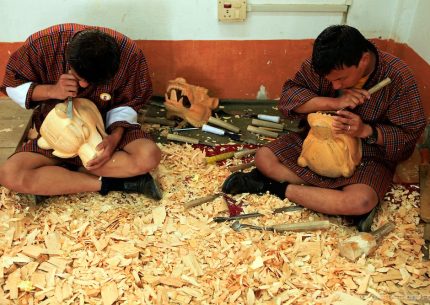
Established as a district in 1992, Trashi Yangtse is one of the newest dzongkhags (district) in Bhutan. It covers 1,437 sq km of sub-tropical and alpine forests, with an immense wealth of natural, historical and cultural resources.
Here, nature lovers can explore the Bumdeling Wildlife Sanctuary, home to a diverse range of flora, fauna, and scenery. It has one of the richest temperate fir forests in the eastern Himalayas and provides an ideally protected habitat for big cats like Tigers and Leopards. It is also home to some other rare animals including Barking Deer, Himalayan Black Bears, Red Pandas and hundreds of Black-Necked Cranes that migrate to the region every winter.
Other areas of interest in Trashi Yangtse include the ruins of Tshenkharla Dzong, a historically significant site that dates back to the 9th century and was the first dzong to have been constructed in Bhutan. It was built by a Tibetan Prince named Lhasey Tsangma, who settled in the region after being exiled from Tibet.
Another impressive historical site is the ancient iron chain bridge spanning the Kholung Chu River, which still stands to this day. The great Yogi Duptho by Thangthong Gyalpo built the bridge during the 15th century.
Trashi Yangtse is known for its excellent wooden cups and bowls made by local artisans using avocado wood and maple wood. It is also famous as a centre of paper making. Craftsmen use the tsasho technique to produce paper with a bamboo frame, which produces a distinctive pattern on the paper.
An Institute for 13 Arts and Crafts (Zorig Chusum) has been established in the region, leading to a greater number of skilled artisans who specialise in woodcarving, pottery, embroidery, painting, sculpture and lacquer work.
Accommodations in Trashi Yangtse are very basic, such as the District Guesthouse and Sonam Chodron Lounge. The best in town is Karmaling Hotel, with nine rooms. It also has a restaurant, serving simple Bhutanese and Tibetan dishes.




